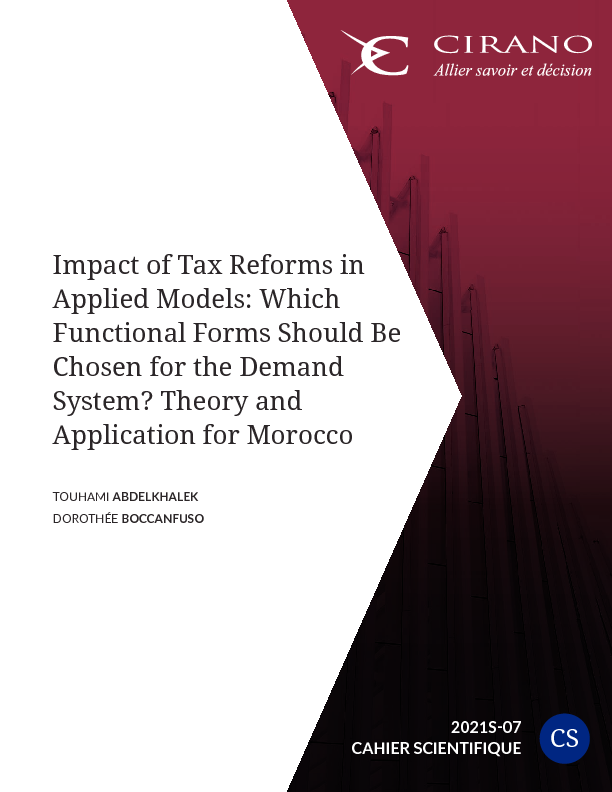Impact of Tax Reforms in Applied Models: Which Functional Forms Should Be Chosen for the Demand System? Theory and Application for Morocco
When researchers and policymakers conduct impact analyses of economic reforms, especially fiscal reforms, the specification of the household demand system becomes crucial. There is a trade-off between using demand systems simple to manipulate but less realistic and other systems that are more realistic but often more complex and difficult to estimate or calibrate. In this paper, we compare the results from two different demand systems: a simple one, the Cobb-Douglas (CD), and a more complex one, the Constant Difference Elasticity (CDE). We develop an hybrid method of estimation - calibration based on the estimation of the parameters and elasticities of a QUAIDS system and on the calibration of those of the CDE system using a cross-entropy approach. The estimates obtained are introduced into a micro-simulated partial equilibrium model to approximate the impact of the VAT reform on poverty measures in Morocco. We show that when the simulated shocks are moderate, the gain of using a CDE system instead of a CD system is marginal but, when these shocks are stronger, the differences become significant and increase. Then the use of these models can lead to different results when evaluating public policies and their impacts on poverty measures.




